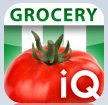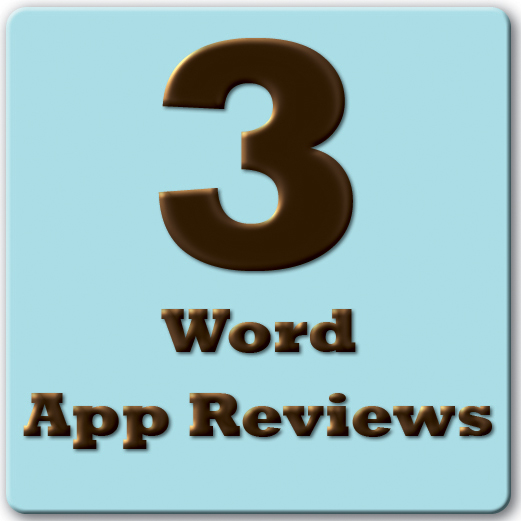
You may be surprised to learn that many iPhone developers are not Mac developers. Perhaps there's a new halo effect underway, bringing fresh developers to the iPhone, and then eventually, the Mac. Jason, (last name withheld to protect the day job) one of the creators of Grocery iQ, currently a top ten application in the app store, gave us a quick look at his experience with coding for the iPhone. And he's agreed to answer your questions in the comments. So feel free to post a comment if you have a question as well.
Q: Tell us about your programming background.
I've been developing software professionally for 11 years. I started out doing Windows/MFC/C++ shrink wrapped software. From there I went to work for an e-commerce startup during the Internet boom. Since I moved on from that company I've been doing component and enterprise Java development for the last 7 years.
Before starting on Grocery iQ, I'd never developed any software on a Mac or for a Mac, and I'd never used Objective-C.
Q: If someone has never programmed before, how can they learn to program for the iPhone? Would you consider this a good platform for beginners?
I don't think the iPhone is a great platform for beginners. Objective-C is somewhat obtuse. I would direct beginners to Java or C to start with.
Q: Since your background is Windows programming, now that you've written an app for the iPhone, any interest in creating Mac software? Is the work for both as similar as Apple has implied?
I am interested in creating Mac software, but at this point we have so much invested into the Grocery iQ platform, I think I will probably be working on other platforms and our sync service, so it may be a while before I get around to it. :)
Coming from Windows, it takes a while to get used to Xcode and Objective-C. I would say I wasn't truly productive in the new environment until working in it for a few weeks.
Q: What was the most challenging part of the development process?
Getting used to the Mac keyboard differences! Having never used a Mac before, I'm still trying to get used to the dang Command key!
Q: Where does the iPhone fit in as a platform from a developer standpoint: Do you approach it as a mobile phone or as a portable computer?
The iPhone is definitely the most "portable computer"-like of any of the mobile devices currently available on the market. However, it still has a lot of the restrictions common to mobile devices. The number one restriction is screen real estate. We spent a LOT of time on the UI and overall usability of Grocery iQ, and I think that really helped our product stand out as a quality, easy-to-use app.
Q: Now that the NDA restrictions have been relaxed, do you think we'll see a more open developer community?
Definitely. When the NDA was in place, many developers were averse to posting questions and code online. I think we will see an explosion of iPhone SDK discussion forums and samples on the Internet.
Q: Since developer-to-developer feedback was curtailed by the NDA, what role did Apple play in development? Did they offer feedback about your app, or did you autonomously write the program, then submit it?
We filed a couple of SDK bugs with Apple, but overall, we developed Grocery iQ autonomously and submitted it to Apple with no big problems. We didn't hear anything from Apple after the app was submitted until we received the email that said Grocery iQ was "Ready for Sale".
Q: For someone who hasn't purchased it, give us an overview of your app.
Grocery iQ helps you build your grocery list fast with the built-in 130,000+ item database. It's easy to put *exactly* what you want on your list - stop getting the wrong thing at the grocery store! Picking from your Favorites and History lets you build a grocery list in seconds. Your list is automatically ordered by aisle to help you get through the store without backtracking. Email your list to your husband so he can do the shopping!
Q: How did you arrive at the price ($4.99) for your app? Do you think developers have a grasp on what people are willing to pay for apps?
Before the app store launched, app pricing was anyone's guess. Since we didn't upload our app to the store until Sept. 7th, we had the advantage of seeing what prices our competitors launched at. We chose the $4.99 price point because we felt it was the right price for the value we were delivering with our app. I think we have a pretty good grasp on what people are willing to pay for a shopping/grocery list app. I can't speak for other app store developers.
Q: How long did it take to develop your app?
5 months of burning the midnight oil. We poured our heart and soul into it, and we hope our customers love the final product!
Q: Why would someone want to use Grocery iQ instead of a paper list?
Your iPhone or iPod touch is always with you. Whenever you think of something to add to your grocery list, pull it out of your pocket and enter it right away. Grocery iQ orders your list automatically to match your store - this keeps you from backtracking in the store, trying to make sure you got everything on a paper list. We have multiple reports and reviews from users saying that using Grocery iQ has cut 30 minutes out of their shopping trip - it helps keep them more organized and makes them more efficient in the grocery store.
Q: Explain the aisle feature.
The Aisle feature in Grocery iQ lets you add, delete, rename, and reorder the aisles. The reordering is the most important aspect, as it allows you to order your Grocery iQ list to match the layout of your store. With multiple store/list support in 1.1, you will be able to store an aisle layout per store/list.
Q: It feels like the level of specific product detail is really intended for the super organized, yes?
Not at all! It may seem that way in the 1.0 release, but our original vision will be fully realized in the 2.0 release with the addition of the Grocery iQ Sync service. One common example is your wife sending you to the store on your way home from work. She will be able to add *exactly* what she wants you to get to the list (down to the brand and exact product size). When you open Grocery iQ at the store, the list will sync, and you can be sure you are getting the right things. This scenario applies not only to married couples, but anyone who needs to collaborate on a shared shopping list: college roommates, restaurant managers, etc.
Q: Can you talk about any future features?
Version 1.1 is nearing completion. It will have support for multiple stores/lists. This is the #1 most requested feature from current customers. Version 1.1 should ship before the end of October.
Version 2.0 is well underway as well. Version 2.0 will be the launch of the Grocery iQ Sync Service. This will be a free upgrade to existing customers. It's a free hosted service, powered by Grocery iQ servers, that allows multiple iPhones or iPod touches to share the same lists and aisle layouts. Pricing support may also make it into this release. We are targeting a late November release for 2.0.
Beyond version 2.0, we plan on expanding to other mobile platforms and the web, among other top-secret world domination plans.
Q: Without giving away your secrets of the app, can you explain where/how you get your shopping item info?
We contracted with several zoos throughout the USA to have several hundred monkeys bang on typewriters for the last few months.
Q: Do you plan on creating other iPhone titles?
Not at this time. We are focused solely on making Grocery iQ better.
Q: Your app was featured by Apple. How did that affect acceptance of Grocery iQ?
Being Apple's App Store Pick of the Week was huge for us. It increased our sales by an order of magnitude. It gave us the foundation we needed to move into the Top 10 Paid Apps. We're currently #8!
 Tuesday, October 21, 2008 at 5:03PM
Tuesday, October 21, 2008 at 5:03PM  Apple,
Apple,  live broadcast,
live broadcast,  quarterly results
quarterly results  Permalink
Permalink 





























